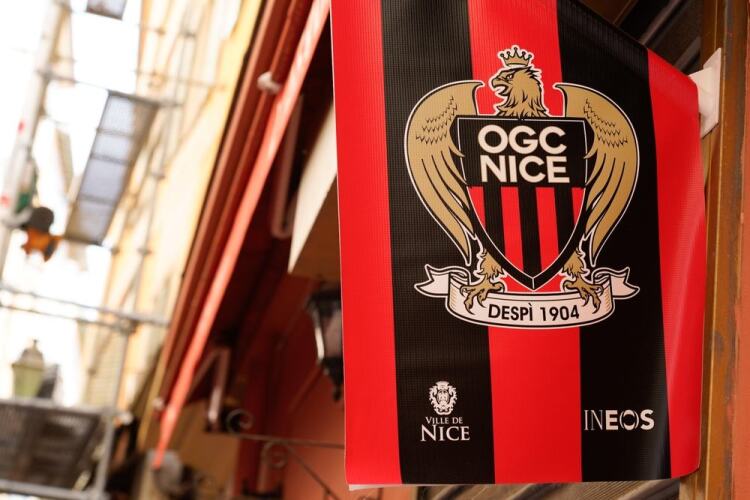Why the refusal to ban related-party loans is a disaster for the Premier League
23.11.2023 12:01:53
The tendrils of multi-club ownership are stretching wider and wider across the globe. Great if you’re part of one of these networks, not so much if you aren’t.
The epicentre of the City Football Group, of course, is Manchester City, with stop-offs in New York, Melbourne, Mumbai and Montevideo. The genesis behind this multi-club scheme is commercial gain; the City Football Group wants to make Manchester City one of the pre-eminent outfits on the planet.
Other multi-club ownership programmes have been designed to gain competitive advantage. Newcastle United have truly lucked out: their Public Investment Fund (PIF) pay-masters in Saudi Arabia have started to attract some big-name players to their suite of domestic clubs, affording Eddie Howe the opportunity to loan some in if the going gets tough on Tyneside. Given that state of global economics, it’s likely that more rather than fewer stars will be tempted out to the Middle East in the years ahead.
Entrepreneurial owners like John Textor (Crystal Palace, Lyon, Botafogo) and Sir Jim Ratcliffe (Nice, Lausanne and potentially Manchester United) are building their own multi-club networks, while the originators of the concept, Red Bull have enjoyed plenty of success in developing players in Salzburg before sending them to RB Leipzig; the likes of Dayot Upamecano, Dominik Szoboszlai and Naby Keïta all embarking on that particular journey.
There are no rules against multi-club ownership, apart from those governing how many networked clubs can appear in the same competition, ramifications that Ratcliffe in particular will have to be mindful of if he acquires a minor stake in Manchester United and has Champions League ambitions.
So what’s the problem then? The answer lies in the gamification of the transfer market and the increased dominance of multi-club schemes over the governance of the beautiful game.
Time to Party
Premier League chiefs, identifying the changing landscape of football club ownership, have moved to try and stop these networks from exploiting the transfer market.
They wanted to implement a ban on ‘related-party loans’, i.e. clubs loaning players from one outfit in the network to another, but to do so would require a motion being voted on and passed by the 20 Premier League clubs, many of whom are part-owned by a syndicate.
So you can probably guess what happened next….to achieve the required level of support, 14 clubs would have had to vote in favour of the EPL’s motion, but only 12 did. This meant that multi-owned clubs are free to manipulate the transfer system as they wish.
Can you guess the eight clubs that voted down the Premier League’s motion? You got it in one: those involved in a multi-club scheme, like Manchester City, Chelsea, Nottingham Forest and Wolves.
It means that Premier League clubs are now free to loan in players without the cost of their wages, perfect for those in danger of failing FFP rules. If you were Newcastle United, would you take PIF owned players like Cristiano Ronaldo, Ruben Neves or Riyad Mahrez on loan in January free of charge?
It’s at this point when multi-club ownership becomes much more than just a business agreement….
Bending the Rules
Although the Premier League wanted to outlaw intra-network loan deals, there is a further complication of related-party transfers, particularly when considered through the sphere of Financial Fair Play rules.
Everton have already fallen foul of a tougher stance on such infringements, with Manchester City and Chelsea nervously awaiting their fate over their own frivolous over-spending.
If football’s governing bodies start to take a harsher stance on FFP breaches and, heaven forbid, actually punish clubs for breaking the rules, you will likely see the benefits of multi-club ownership come to the fore once more.
Let’s say that Club A wants to sign a particular player, but they know they are in danger of breaching FFP at their current level of spending. So what can they do? Well, Club B, also part of the same ownership stable could buy the player instead, before loaning them to Club A at a negligible rate. The outcome? Club A gets what they want without catching the attention of FFP accountants.
In theory, Club B could also sell the player to Club A at a reduced rate – the perks of this multi-club ownership programme, and the ability to game Financial Fair Play rules, is another threat endangering the integrity of football.
Massaging the Truth
Although it went under the radar compared to the furore surrounding the related-party loan vote, the clubs operated by a multi-ownership scheme had another win at the ballot on the same day.
The Premier League wanted to bring in tougher rules on sponsorship deals that a club pens with a business or commercial partner associated with their owner. Again, you probably know happened next: the same related-party clubs voted down the motion.
So it means that a football club owner can sponsor their team via their business interests, which can have significant impacts upon FFP calculations. If you ran a successful firm, you could write a cheque for £100 million to sponsor the club’s kit or training ground, irrespective of whether that sum was realistic or not.
Financial Fair Play calculations are, in broad strokes, an outcome of subtracting money spent (i.e. transfer fees, players wages etc) from money earnt (e.g. player sales, sponsorships etc). So, if the owner is cutting mammoth sponsorship deals with his or her own company, they are basically artificially enhancing the football club’s transfer budget.
There have already been examples of this in action. In 2011, Manchester City signed a record £400 million sponsorship deal with Etihad Airways. Etihad Airways is owned by ADQ, a sovereign fund of UAE’s ruling family. Manchester City are owned by….a member of the Abu Dhabi ruling family. And so the circle is completed.
Further allegations have come that funding has also been pumped into the club disguised as private equity from the UAE, when in actual fact it came from the individuals that own Manchester City.
Of course, other clubs in the network benefit from the increased money sloshing about in the group, so this is just another reason why multi-club ownership is bad for football….not that the sport’s governing bodies have the power to do anything about it, of course.
Click here for our Discounted Account Offer. Access updated previews and analysis on up to 5 tournaments for 30 days.

What is the secret to Francesco Farioli's success at Nice?
Francesco Farioli was appointed as head coach of...
